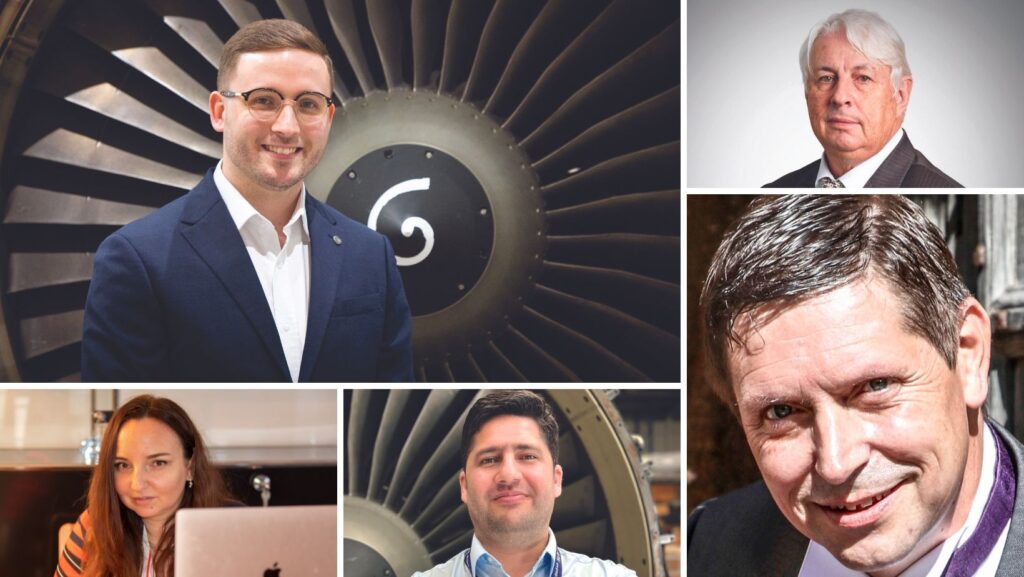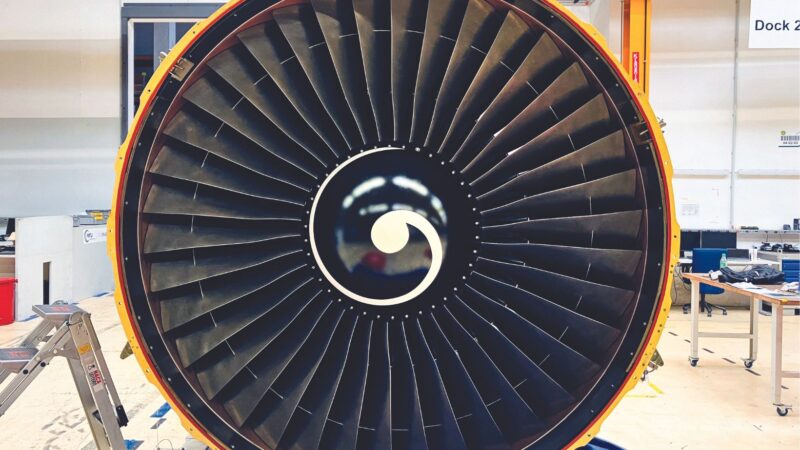Engine leasing: Navigating rising demand
Pressures at the OEM level and elsewhere have created a market where some correction is needed. Kevin Rozario hears from some in the engine leasing space for a first-hand view of the challenges.
The scenario of high demand and tight supply has become very familiar in the postpandemic era, particularly so in engine leasing. The shortage of leaseable units has placed a burden across the aviation sector leading to some unusual market activity.
At independent aftermarket engine services company, AJW Group, director of engines Wasim Akhtar sees the OEM sector as the root of the problem by significantly impacting the availability and delivery schedules of engines. “As a result, operators are increasingly opting to maintain their existing fleets, driving up the demand for engine leasing,” he says.
Akhtar adds: “The delays in OEM production, compounded by supply chain disruptions, have prompted operators to explore alternative solutions such as lease extensions for current engines. This approach is favoured due to its cost-effectiveness and operational efficiency and AJW is offering such services to support clients in keeping their fleets in the air.”
While this is boosting MRO business, there are hazards. Demand for light repairs and modular swaps on engines designated for teardown and retirement highlights supply chain bottlenecks. Akhtar comments: “Operators may find themselves compelled to extend the service life of engines beyond their initial plans, necessitating maintenance and repair services.” This requires extra vigilance and a dependable partner that can maximise the engine lifespans despite the logistical hurdles.
Graeme Crickett, chief technical officer at SMBC Aero Engine Lease (SAEL) puts it succinctly: “Given that one cannot make an engine at short notice, the only solution is to fix the MRO side in the short-term. That means availability of parts and shop turnaround times (TAT). We expect the situation to normalise as soon as these two items are addressed.”
In the case of the A320, Crickett adds: “In any other situation, we would have expected the ceo aircraft to be parted out and supply parts, but airlines need to hang on to those to mitigate the neo issues.”
In its commercial aviation forecast in February, consulting firm Oliver Wyman noted that MRO is expected to expand to $124 billion by 2034 and added: “A raft of next-generation engines has entered the market, all of which have experienced their fair share of operational issues. For this reason, engine MRO will grow faster than other segments of the aftermarket, at a compound annual growth rate of 2.3%.”
Topsy turvy engine pricing
Aero Care’s managing director Anca Mihalache says that the scarcity of suitable engines for lease is particularly evident for narrowbody units, while Lee Carey, vice president of origination and trading at EirTrade Aviation believes that the shortage also extends to widebody engine types.
“The challenge of sourcing ‘green-time’ engines has become increasingly hard, exacerbated by instances of recently overhauled engines being sold at prices surpassing those for new units,” says Mihalache. “This shortage will persist for an extended period as it is compounded by the issues being encountered with newer engine models. The only solution is to send engines for performance restoration or even for repair.”
Illustrating the point, Vallair has just sold a CFM56‑5B engine, fresh from performance restoration. Patrick Leopold, director asset management, says: “The demand for this engine type is strong and steadily increasing due to very high engine shop-visit demand, limited engine shop availability, long turnaround times and labour shortages. This high-demand engine will go straight to lease.”
According to APOC, some of its airline customers have several aircraft parked up due to lack of engines. Bruce Ansell, technical manager, engine division, says: “In the short term, the operators can lease additional aircraft and investigate the potential of bringing aircraft out of storage. We also see that a lot of engines are now stuck in repair shops due to the lack of available parts (both new and USM), and/or due to the shortage of skilled labour. Labour resource is an ongoing issue and demonstrates the need for enhanced investment into recruitment and training.”
This article continues after the below picture…

Where will lease rates end up?
Lease rates have risen. At EirTrade Aviation, Carey notes that lease rates had increased significantly in the past year on many engine platforms. “These are directly related to the reduced availability and increase in demand,” he says. “Additionally, many of the current leases are being extended.”
Ansell agrees: “Lease rates are increasing quickly, while utilisation and reserve rates are also being watched closely due to the significant increases in material and labour costs. At APOC we view this as cyclical – frequently seen when regulatory or technical factors impact the number of engines available.”
SAEL’s Crickett says: “Lease rates are up, driven by the supply-demand situation and also higher interest rates. Engine values have gone up as a consequence too. We expect that situation to last over the medium-term and then rents should come down. The main driver will be the GTF and the LEAP-1A situations.”
AJW Group has observed lease rates returning to levels seen prior to the pandemic, with operators opting to extend leases on ageing engine types like the CFM56 and V2500. Akhtar says: “This choice is driven by a combination of economic considerations as older engines remain reliable and perform well. The trend of extending leases on older engines is expected to persist for at least another two years.”
The aviation industry is navigating a transitional period as it sorts out its next-gen hiccups. Aero Care’s Mihalache comments: “The current trajectory of lease rates suggests a return to pre-pandemic levels, albeit within a context significantly transformed by the passage of four years and the emergence of new engine technologies.” She adds that, for now, a period of relative stability in rates is likely.
A challenged outlook despite expansion
The shortage of engines available for lease will continue. EirTrade Aviation’s Carey thinks the situation could worsen in the short- to medium-term. “This will be driven by the number of older aircraft needing to remain in service longer to offset the supply-chain delays relating to newer replacement aircraft. This trend will continue to keep lease rates on in-demand aircraft at current levels,” he says.
AJW’s Akhtar expects engine leasing to experience significant expansion. “Many airlines are opting for leases to avoid the upfront costs associated with engine purchases, while also providing greater flexibility in fleet management and risk mitigation,” he explains.
However, as the leasing market grows, there will be an increase in engines requiring overhauls or retirement. Akhtar says: “This demand for used engine parts is having a notable impact as the supply of both lease engines and parts falls short of demand.”
Aero Care does not see major market shifts until 2026-2027. “We don’t expect any dramatic disruption in this period,” says Mihalache. “In terms of trends and challenges in the immediate future, we anticipate an uptick in engines undergoing performance restoration, potentially further exacerbating parts shortages.”
APOC’s Ansell paints a nuanced picture: “This is a very interesting time for the engine leasing market, with huge demand in the narrowbody sector, and lease rates and utilisation rising. These factors are countered by challenging technical requirements to provide and support the engine assets.”
The biggest hurdle is obtaining a sufficient number of engines to keep planes in the air. Opening more shops and new product lines is one way to try and satisfy demand, although finding qualified staff to support them is another battle. “With shop visit capacity a concern, I expect to see operators and lessors carrying out more module swaps to ensure that they can keep an engine flying,” says Ansell.
Viewpoint on MRO labour shortages – Graeme Crickett, chief technology officer, SMBC Aero Engine Lease (SAEL)
“The MRO labour market issue was a self-induced problem. A lot (but not all) MROs took the opportunity to address staffing levels (mostly an ageing workforce) during Covid-19. Good MRO engineers do not grow on trees; on average they take around 10 years to build up experience and let that reflect in the work outputs. When MROs went back into the market for workers, they could not recruit in scale to reflect the rapid growth in orders. Most MROs do not have a sustained training system for bulk staff but recruit on a replacement-per-person-who-leaves basis. MROs now have an ability to address an ageing workforce with new hires, new apprenticeship schemes, staff training, incentivisation, retirement plans, etc. But my guess is that they will not do this and just return to the previous system and blame any delays on ‘supply chain issues’ which is not only about parts and parts-repair but also the supply of staff.”
This feature was first published in MRO Management – April 2024. To read the magazine in full, click here.
